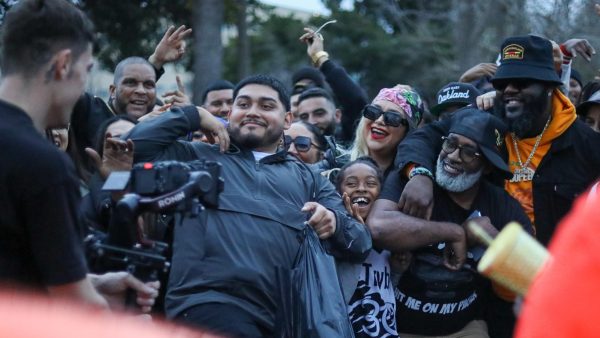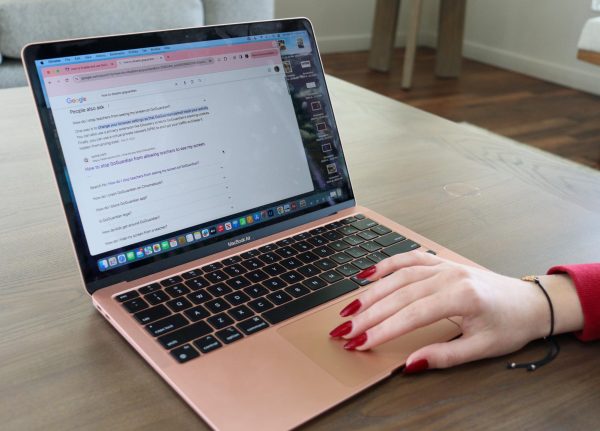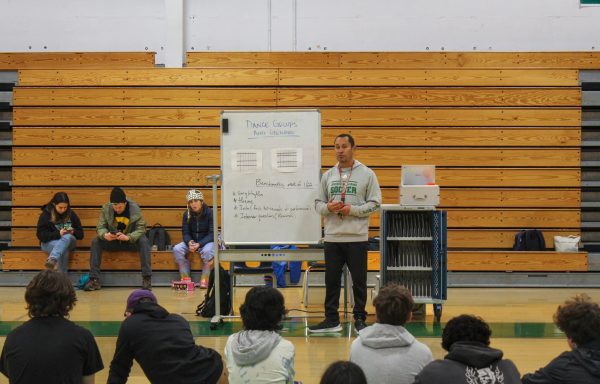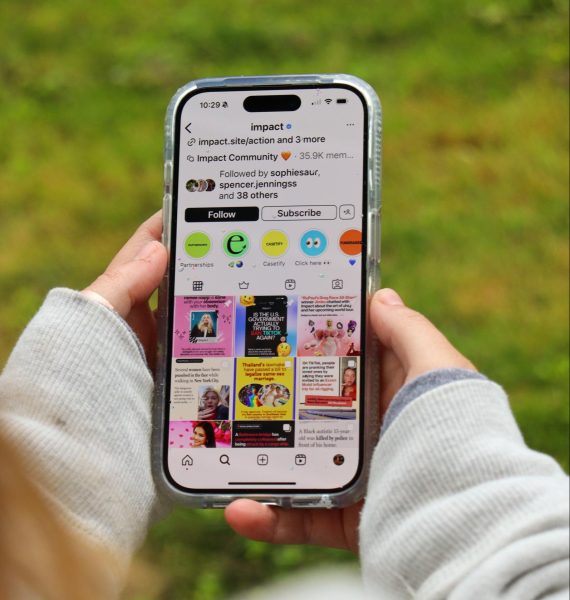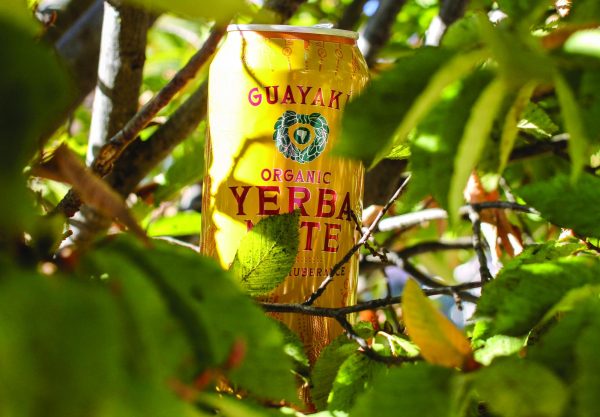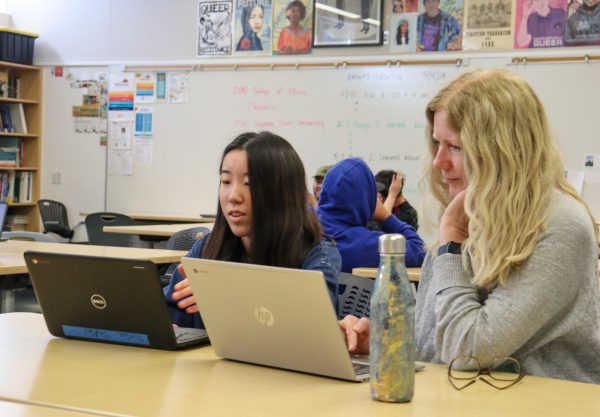Keeping their Distance: Students stay remote while others return to in-person school
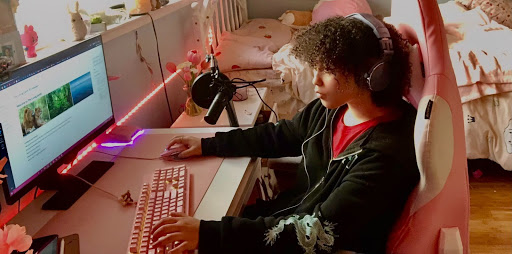
Kennedy Williams
Sophomore Kennedy Williams working from home on a science assignment about genetics
On Feb. 23, Marin County moved back into the “Red” COVID-19 tier, signifying that COVID-19 cases had dropped to a sufficiently safe level that allowed gyms to reopen and restaurants to reopen indoor dining with limited capacity. This move into the Red tier also allowed public schools all over Marin County to return to in-person learning using a hybrid model. Despite the fact that students and teachers were allowed to return to High School 1327 (HS 1327) on Mar. 2, some have decided to continue teaching or learning remotely due to worries about COVID-19.
HS 1327’s in-person learning plan allows students to return to school in three different groups, each going to school on different days depending on the week. Before these cohorts were created, the school’s administration gave families an option to decide whether their students would continue learning virtually or return to school in-person. There are a variety of reasons as to why some students might decline to return to in-person learning, but HS 1327 freshman Cy Stock explains that he declined to return to in-person classes due to the fear that there are too many COVID-19 cases to safely return to school.
“My parents don’t feel like it is safe for me to go back [to school] given the new variants of [COVID-19] and the amount of COVID cases at this time,” Stock said.
According to the Center for Disease Control (CDC), there have been 13,470 reported COVID-19 cases in Marin County since the start of the pandmeic. Although COVID-19 cases in Marin continue to drop, many community members feel it is premature to return to in-person learning.
Stock said that, coupled with the amount of COVID-19 cases in Marin, he and his family feel uncomfortable with the spread of new variants from America and abroad. But despite the fact that he cannot interact with “school friends” at HS 1327, he has been able to spend time with his closest friends.
“I still see some of my closest friends outside and socially distanced, however with the lack of in person school, I lost touch with some of my ‘school friends’ … Before, I would see them everyday at school, but in an online setting that is no longer possible,” Stock said.
Stock plans to return to in-person school when a COVID-19 vaccine is available to him.
Like Stock, HS 1327 sophomore Kennedy Williams declined to return to in-person learning at HS 1327 due to her father’s lymphoma, which is a cancer of the lymph nodes. Despite the fact that this cancer has not weakened his immune system, Kennedy does not want to take any risks with regard to her father’s health.
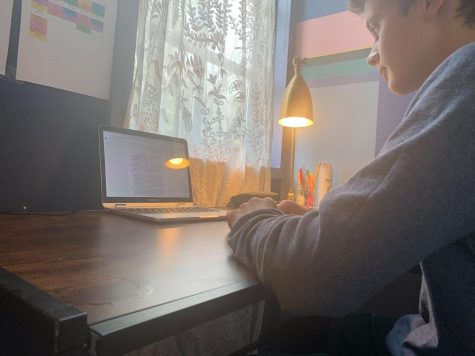
“I couldn’t risk possibly contracting [COVID-19] and giving it to him, and even if his immune system is fine the majority of the time, the stress of potentially passing it over is too much for me to handle on a day-to-day basis,” Williams said.
Aside from her father’s health, Williams does not feel comfortable returning to in-person learning due to the number of COVID-19 cases in Marin County.
“I still think it’s not the best idea to go back when cases are still high. Sending kids back right now feels irresponsible, especially knowing that high-school aged kids won’t go through the proper guidelines set for them. It’s just asking for cases to go up again, and until things are proven to be working well, I’ll be staying home,” Kennedy said.
Williams says that despite not feeling isolated from friends, she feels disappointed that she cannot return to school with her friends.
“I miss the social aspect of school more than anything else, and I was even lucky enough to be put in a cohort with the majority of my friends. Hearing them talk about how it’s nice going back and knowing I can’t brings me down from time to time,” Williams said.
Williams will return to in-person classes at HS 1327 in May if COVID-19 cases decrease. If they don’t, she will wait and attend in person classes at the start of her junior year in August.
Unlike Williams, sophomore Aidan Gilmartin does not feel disappointed that he decided to continue learning virtually. Gilmartin says that despite not going to school, he can still stay in contact with his friends through social media.
“Thankfully with access to social media such as Instagram and Discord, I’m able to stay in good contact with my friends,” Gilmartin said.
Gilmartin says that because he is learning virtually, he can manage his time in terms of school work, and he is more confident that he will not contract COVID-19.
Aside from the way that he does his school work, Gilmartin chose to decline to return to in-person learning because of the number of COVID-19 cases in Marin and the unknown consequences of returning to school with a brand new way of learning and safety system due to COVID-19.
“This being a new experience and way of both teaching and learning for our school, it’s hard to expect us to get [the system] perfect the first time,” Gilmartin said.
Gilmartin plans to return to in-person learning when a COVID-19 vaccine is more available to teens.
Like Williams, HS 1327 sophomore Tony Hefferman also does not want to return to in-person school due to a fear of passing on COVID-19 to a member of his family. He also feels that it is too early to return to in-person schooling with the number of COVID-19 cases in Marin County.
“I have a large family with little kids and a baby, my dad is immune compromised. I also just don’t think we’re at the point where we should go back yet, it seems too early when looking at the numbers,” Hefferman said.
Hefferman says that despite feeling disappointed in not going to in-person school to interact with friends, there are some aspects of virtual school that Hefferman enjoys.
“Honestly the only benefits I’ve experienced [staying virtual] are having my own PC here at home and more little things like I don’t need to adjust my hair or wear anything fancy,” Hefferman said.
Hefferman plans to continue learning from home for the rest of the school year, but he might go back to in-person school over the final weeks of the school year to understand what it will be like returning to school in August.
Manuel Castro, a teacher at HS 1327 since 2012, decided to continue teaching from home due to an immunocompromised individual in his household. Castro says that he feels very disappointed that he cannot return to teach in-person, as he enjoys spending time with his students.
“I have been wanting to go back… I am not as excited to see everyone virtually as I am to see [students] in person…I miss the in-person student interactions. I also miss the interactions with the school staff, whether that’s teachers, counselors or custodial staff,” Castro said.
Castro initially wanted to return after Spring Break, but because it takes 15 days for the second dose to penetrate your immune system and protect you from COVID-19, Castro plans to return to in-person teaching in May.
Despite California allowing in-person schools to open, many HS 1327 students and teachers have decided to continue learning and teaching virtually from their homes. This may change as COVID-19 cases continue to drop, allowing more and more Americans to receive their COVID-19 vaccinations.
Your donation will support the student journalists of Archie Williams High School. Your contribution will allow us to purchase equipment and cover our annual website hosting costs. Each donation will receive a magazine subscription for a year (6 copies a year), and become a part of the important work our publication is doing.
$35 -- Subscription to the magazine
$50 -- Silver Sponsorship
$75 -- Gold Sponsorship
$100 -- Platinum Sponsorship

Henry is a senior in high school, who loves to play tennis and enjoys spending time outdoors hiking.


